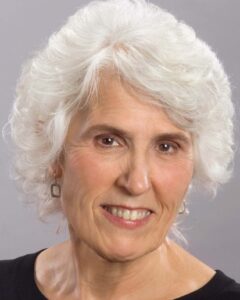How Mindfulness Upended (and then Transformed) My Teaching Practice
I was nearly fifty years old when I began practicing mindfulness. I was falling apart, in therapy for the first time ever, and completely ungrounded. Daily meditation, studio yoga classes, and a weekly meditation group emerged as life rafts as I tried to stay afloat.
I was also an educator and consultant, with three decades of professional experience. I continued my teaching work, cut back on extra duties and put consulting aside for a few years. My mindfulness activities and groups were quite separate from my teaching life and spaces.
Three years into my mindfulness journey, I accepted a broad, multi-day consulting request that included program evaluation and a focus on a few individual students. It was during this work that the unexpected happened. I was conducting an exploratory session with a complex elementary school learner I had never met while his teacher and other professionals observed. The student joined me and sustained engagement in ways his teachers had never seen. I seemed to know instinctively how to proceed with just right shared reading and writing activities and some basic technology tools. Afterwards, I was deeply moved, keenly aware of the connection that I experienced with this speechless, dark-eyed boy. In the days and weeks to come, I replayed this session in my mind many times. I wondered what allowed me and the student to have such a coordinated experience during this improvised session. In the months that followed, I had several more individual assessments of this type. Eventually it became clear from a great big failure and then some more successes that mindfulness was the foundation of this first surprising teaching encounter. When I was able to be grounded in mindfulness, there were many effortless moments of connection and flow. I could invite without directing. I could support lightly while I listened and observed what a student was offering, available to see and hear and understand. I could let things unfold with curiosity and skillful guidance. I could draw upon my professional skills and knowledge with ease. Mindfulness revealed not only what is possible for this student but, perhaps more importantly, what is possible for this teacher. This was what was so powerful and striking about that first unexpected session.
These repeated opportunities for deep, focused experiments with mindful teaching as a consultant challenged me to reflect on my teaching practice in other contexts. I began to reassess my broader teaching role, as a graduate education professor. My shift and commitment to explore mindful teaching came with many uncomfortable emotions, including fear and anxiety. Changing my teaching approaches required me to take many risks and to pay very close attention to my experience, especially during the beginning phase. I wrote privately about my experiences on a regular basis. Writing allowed me to reflect on my inner experience as I prepared for each new academic semester, class and meeting, and monitored my feelings, efforts, and changes throughout the semester. I had become conscious that the time had come to honor my commitment to mindfulness in all of my teaching. I was not at all comfortable, but I felt I had no choice. It was a matter of personal integrity. I took the leap.
For me, mindfulness is about cultivating my attention. I practice to grow my ability to be present to and observe my experience on the inside and the outside in this moment with kind awareness. My intention is to increase my capacity to see, feel and hear my actual experience just as it is, without resistance or stories.
I became curious about what it might mean to bring my mindfulness “off the cushion” and attempt to consciously stay connected to it through many of my professional decisions and actions. It included, and went beyond, my daily meditation practice -which for me is a critical foundation. My mindful teaching experiment was to bring presence and awareness to what was happening (on the inside and outside ) as I engaged with all elements of my work as an educator.
As a mindfulness practitioner, I had more awareness of and attention to my inner life and its connections to my experiences. I understood that mindful teaching would require deep looking into my inner teacher experience. I did not know how or what this meant. Over time, my exploration included learning to read my nervous system and my patterns so that I could more often be intentional and respond more skillfully. This meant tuning into and reflecting on my physical sensations, thoughts and feelings as an integral part of my teaching. I often wrote about some of my successes—and failures– as I intentionally tried to bring mindfulness to my work. Reflecting on what I was thinking or feeling before, during and after various situations, supported my learning so I could make adjustments and cultivate a more mindful offering.
As I looked carefully into my teaching work, I identified habitual energies, thoughts and behaviors that were not at all mindful. It was a very humbling process. I recognized ways I was not mindful, but I did not have a clear vision of what mindful teaching would look like and sound like –and most importantly, feel like. What I called my experiments were intentional efforts to do something that was not so mindful differently, and to pay attention to how that went. It could be uncomfortable and awkward, sometimes for weeks, as I tried on new ways of being. For example, in the first semester I planned fewer class activities, meditated before class, and slowed my pace (including my speech and movements). This was an experiment for bringing more presence and a calmer energy.
Over time, several insights emerged as fundamental conditions for my mindful teaching. One element was my professional knowledge and skills for my role. A second was my growing attention to my inner experience before and during and after classes and meetings. Another element revealed itself later and I call it intention. There is something deeper orienting and guiding my decision- making in mindful teaching. Intention for me includes the roots of my educator calling: Who and what influenced me to pursue this teaching path? My intention also includes two overarching questions that clarify my purpose and serve as a vision and a compass for all of my decisions, large and small. Who do I want to be as a teacher? How do I want to impact my students, both now and in the future? Practicing to stay in touch with my intention affirms when I am going in a mindful direction and alerts me when my thinking or actions are out of alignment with my intention.
This pursuit of a mindful orientation had a significant impact on my last decade of my career as an educator. Benefits presented over time. I found that I was better able to perceive situations realistically and choose a more skillful response that was not shaped by anxiety or misunderstandings. I had increased clarity about my role and trusted my work more. I was able to view my teaching as an offering. I experienced more connection to myself and others in my teaching work, and more satisfaction.
Mindfulness supported my journey back to balance and wholeness to revive the spirit of my teaching. The power of this teaching path flows from the inside. Where or who or what we teach is irrelevant to the process of developing a mindful teaching practice. Mindful teaching is an inside job.
- Roberta Schnorr, Author of Inside Mindful Teaching

